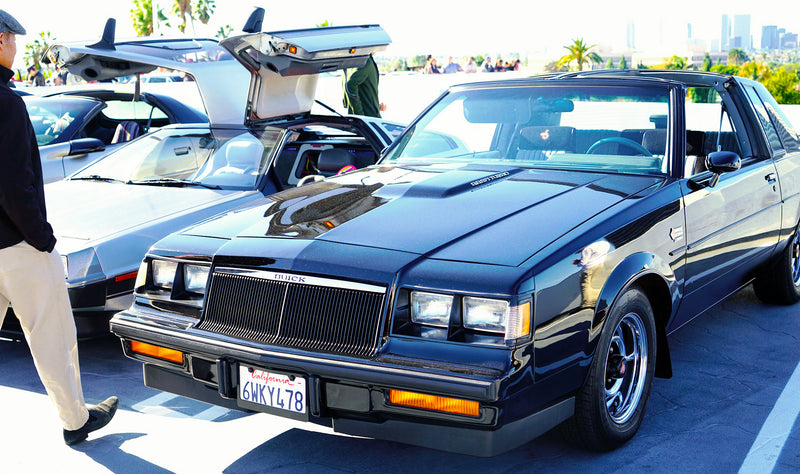
Easy A/G-body (and F-body) Brake Upgrades with Wilwood
Improve Your Rad GM Ride with Better Braking
General Motors made so many cars back in the day that parts for them are easy to come by and inexpensive. You may be too young to remember, but at one time, GM alone sold 50% of the cars in the US. That was back in the 1960s, but even through the 1980s, they still had a considerable market share. Also, GM management loved the economy of scale and used the same brake parts on multiple platforms, including the bread and butter A-body coupes, sedans, wagons, G-body personal luxury coupes, El Camino, and S10 trucks, and the sporty 1982-92 F-bodies.
The ready availability of GM brake parts (and the familiar 5 x 4.75-inch bolt circle) has led to them being used for disc brake retrofit kits on many classic cars and trucks. It is not surprising to see old 50s Chevys and hot rods with 1980s GM brakes on them, but you might be surprised to see some of the places they show up, like the rear axle of Toyota Land Cruisers. Builders of lowriders love the small GM "metric" caliper and rotor because it clears small wheels. Wilwood makes several kits to fit our version of these brakes to the rear axle of even Fords, Mopars, and Jeeps.
GM "Metric Chassis"

Even before the 1970s fuel crisis, GM was planning a smaller future because cars getting bigger and heavier with each new generation had made them a ridiculous size. The all-new for 1978 midsized A-body/G-body cars were smaller than the supposedly "compact" X-body cars (Chevy Nova, Pontiac Ventura, etc.) on the outside. Inside, more modern design and construction gave them more passenger room, and they were lighter.
(GM rear-wheel-drive midsized cars were known as A-bodies until 1981 when similar size FWD cars were introduced with that designation. From 1982 they were designated G-bodies, a name formerly only used for the Monte Carlo/Grand Prix/Cutlass Supreme.)
Because America was trying to convert to the metric system, GM engineered this platform using metric fasteners and measurements. Local circle track racers dubbed it the "metric chassis," and it became the basis for street stock, late model, and modified classes all over the country.
In various circles, the front brakes these cars use are called GM small calipers, GM "metric" calipers, "Monte Carlo" calipers, and by the number the Friction Materials Standards Institute (FMSI) gave the brake pad shape, D154.
Metric Shortcomings
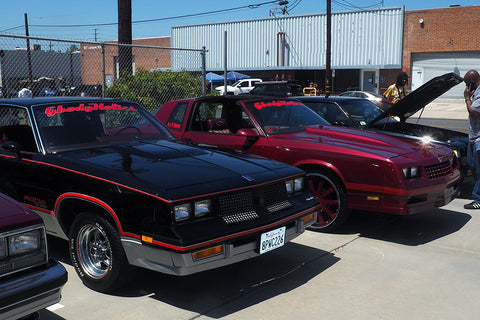
Converting to the metric system proved more difficult than expected, but America fully embraced the "metric chassis."
Some design features make it ill-suited for performance use, but the aftermarket has fixes for everything. The factory A-arm front suspension (also shared with the S10 truck) has a camber curve designed for understeer and a relaxed ride. Wilwood can't help you with that problem yet, but aftermarket extended ball joints can.
The front brake rotors are small (just 10.5-inch), and the spindle with an integrated caliper bracket makes installing larger rotors or different calipers difficult. But, Wilwood has developed upgraded, bolt-on, factory replacement calipers for street or track in single and dual piston designs to work with the factory rotors. The Wilwood big brake kits for the stock spindle can be had with up to 14-inch rotors, but they do require some machine work.
If your classic or hot rod has an older disc brake conversion, done with small rotors and factory-style calipers, chances are it uses the "metric" D154 caliper. Lowrider builders often use them because the 10.5-inch rotor fits easily behind smaller wheels. Many lightweight roadsters paired Ford Pinto/Mustang II rotors and GM D154 calipers. If it takes replacement brake pads that fit an 80s Monte Carlo, your vehicle has the D154 calipers.
Low Drag Calipers and Stepped Bore Master Cylinders
For the 1980 model year, in an attempt to eke out an extra MPG or two from these cars, General Motors switched most of them over to a new low drag caliper. Because the seals in the caliper bore were angled in a specific way, they pulled the brake pads away from the rotor an extra fraction of an inch to eliminate brake drag. To make this work, their engineers created a stepped bore master cylinder. A larger piston near the firewall moved more fluid volume, which automatically switched to a smaller bore for more pressure once a certain line pressure was reached. Without a stepped bore master cylinder, these low drag equipped cars always seem to have too much pedal travel, a similar feel to needing the brakes bled.

You can use the factory type stepped master cylinder with non-low drag calipers (like any of Wilwood's), though they tend to be a bit touchy. Using a straight bore master cylinder with the original low drag calipers is not advised, or you will be pumping the brakes twice every time. Most new replacement calipers for these cars made in the past 20+ years, even inexpensive generic ones, are not the low drag type. However, many caliper rebuilders don't differentiate between the two, so even if you order matched parts from the same company, you never know what you will get.
There is no easy way to ID the low drag units from the outside; both types use the same brake pads and mount to the same brackets. Stepped master cylinders can be easily spotted because the body gets thicker about an inch before the mounting flange. Wilwood now has a straight bore, angled reservoir master cylinder that is a direct bolt-on replacement for the factory stepped bore. More details on this are below - Master Cylinders.
Wilwood D154 Aluminum Caliper

All the "metric chassis" A-body/G-body cars (along with the Chevy S10/GMC S15/GMC Sonoma trucks and related SUVs) use the same caliper, often known as the D154. Because the GM spindle design makes brake upgrades difficult, Wilwood designed a caliper that works with the stock rotor and spindle but delivers better clamping force.
All Wilwood D154 calipers are a proprietary forged billet aluminum design, lighter than the factory iron caliper but with less deflection. Several bore sizes are available, with one large piston similar to OEM or two smaller ones. Even with a piston sized the same as a stock OEM caliper, Wilwood's version delivers more braking for a given amount of pedal effort by putting that force into the pad and not into caliper deflection.
The D154 single-piston calipers come in a 2.5-inch bore similar to the factory size, finished in gloss red or black powder coat, hard anodized, or polished aluminum. The D154-R race calipers are only available in hard anodized aluminum oxide ceramic, in 2.5-inch or 2-inch bore, for 1.04-inch wide rotors
The Wilwood two-piston D154 calipers also come in two sizes appropriate for front and rear use. The larger bore has two 1.625-inch pistons with slightly less total area than the OEM single piston caliper, but more balanced clamping for better feel and easier brake modulation. The smaller bore has 1.125-inch pistons for use on rear axles, delivering less than half the clamping force of a front caliper for balanced brake bias.
Wilwood Metric Iron Caliper

The "metric chassis" is the basis of many oval track classes being raced today. Tracks have adopted strict rules to limit costs and keep competition close, many even mandating OEM-style calipers. Wilwood has engineered an upgrade, which is legal for most tracks.
The Wilwood GM Metric Iron caliper (with stock size 2.5-inch bore P/N 120-16101) is fully approved by the IMCA for use in all of their "metric chassis" based classes.
The Wilwood GM Metric Iron caliper may look similar to the original equipment, but it is significantly improved. Wilwood's dedicated virgin iron castings are lighter and stiffer than rebuilt OEM units; they are new, not rebuilt. Hardened slide pins (sold separately) reduce the likelihood of calipers seizing or the pads getting askew as they wear. High-temperature quad-ring seals and stainless steel pistons are made explicitly for extreme competition use. They are the same materials used in our four and six piston professional race calipers. These calipers can handle the high heat of racing, lap after lap, but they are also a premium replacement part for your street car.
Wilwood's other GM Metric Iron calipers include a bigger and smaller bore in calipers with the same outside dimensions. The bigger size features a 2.75-inch bore (P/N 120-8954), roughly 20% more surface area, with a similar increase in clamping force for a given pedal effort. The smaller size is for rear use and features a 2-inch bore for roughly 35% less clamping force than the standard front caliper for proper built-in brake bias. The 2-inch bore (P/N 120-9333) is slightly smaller than the caliper GM used on the rear of the 1979-85 Cadillac Eldorado, which is popular for rear disk conversions.
Big Brake Kits

Wilwood has big brake kits, which utilize our fixed mount opposed piston calipers, but the installation requires some machine work. Because the factory caliper bracket is integral with the spindle, mounting fixed mount calipers or rotors bigger than the factory 10.5-inch size requires cutting to remove it. But there are good reasons to go this route for ultimate performance.
For drag racing, there are lightweight 10.75-inch rotor kits that can take up to 50 pounds off the front end. For general road use, track days, or club racing, choose from 11.00-inch, 12.19-inch, 12.88-inch, or 14.00-inch rotor kits with forged aluminum four or six piston rotors.
Mounting these kits starts with removing the spindle and cutting off the old caliper mounting ears, using the mounting bracket from the kit as a guide. Then the mounting holes used for the factory dust shields need to be drilled larger and tapped for 3/8"-24 mounting bolts. The modifications are not that complicated, but they are not something that can be done at home with a cordless drill and a hack saw; consult your local machine shop.
Rear Axle Use

Converting from drums to rear disc brakes on a street car means solving the parking brake problem. GM didn't install the D154 on the rear of any cars, but a similar hydraulic/mechanical caliper was used on the large 1979-85 front-wheel-drive Cadillac El Dorado/Seville, Buick Riviera, and Oldsmobile Toronado. These have become hard to find.
For cars without a parking brake, sometimes D154 front calipers are substituted, but the proper OEM rear calipers use a smaller 2.125-inch piston. Using a caliper with too big of a piston will cause the rear wheels to lock prematurely as weight transfers. An adjustable proportioning valve will limit lock-up but may not cure the issue even when cranked fully out.
Using a Wilwood D154 racing caliper with a 2-inch piston, two piston D154 caliper with 1.125-inch pistons, or Metric Iron caliper with a 2-inch piston for the rear will give your vehicle a much more appropriate front to rear brake bias. However, none of the Wilwood metric/D154 calipers include a parking brake function for street use.
Wilwood does have D154 caliper-based rear conversion kits for earlier GM 10/12-bolt equipped cars, Ford 9-inch rears, and Dana 60 and 35 differentials in Mopar cars and Jeeps. These kits incorporate a factory-style drum parking brake within the rotor mounting hat.
Wilwood also has stand-alone mechanical parking brake calipers and the new EPB electronic parking brake that can be retrofit to many applications.
G-Body 7-1/2" & 7-5/8" Rear Axle Kits

Most of the GM G-bodies were equipped with a 7-1/2"(7.5") or 7-5/8"(7.625") rear differential, which externally were nearly the same, that has a unique axle flange. The large rectangular flange, with top corners angled, was unique to these cars, and designed to reduce parts and labor on the assembly line - The drum brake cylinder is retained to the flange with a big spring clip.
Wilwood has engineered brake kits which fit these differentials, with built in internal drum parking brakes, but there is some machining of the flange required. The Dynapro kit (P/N 140-17120) features four piston calipers and an 11.00" x 0.81" one piece rotor which fits behind most 14" wheels. The Dynalite kit (P/N 140-17121) also features four piston calipers, but uses a 12.19" x 0.81" one piece rotor that requires at least a 15" diameter wheel. Both kits are offered with red or black power coat calipers, and plain face of drilled and slotted rotors.
Master Cylinders

To save money and simplify things on the assembly line, GM for decades used brake boosters that tilted the master cylinder at 15 degrees, which allowed a common mounting position with a lower overall pedal ratio. A second hole in the pedal arm lined up with the pushrod angled upward into the booster. Wilwood's tandem master cylinder works with these boosters, but fluid can dribble down the back of them if overfilled. Some of the early master cylinders used by the factory had the same problem, with fluid dripping out the back because of the tilt.
(Buick's Grand National is a notable exception, because the factory used a Hydroboost system, with the master cylinder mounted parallel with the ground, not angled)
Wilwood now has a tandem master cylinder with plastic reservoirs that take the angle into account and won't drip. These units incorporate the same engineering and manufacturing used by our other master cylinders, including those used in professional racing. High-pressure die-cast aluminum, with precision-machined bores and premium pistons and seals, provide consistent, exceptional pedal feel and reliable, repeatable braking.
If you have already replaced your car's low-drag calipers, the next improvement is to install a high-performance straight bore master cylinder. As mentioned before, many of this era's G-body and F-body cars had a stepped bore master cylinder, which, when used with upgraded brakes (without the fuel economy-minded low drag calipers), can be grabby and hard to modulate.
Wilwood offers a 1-inch or 1.125-inch bore to tune pedal effort to the driver's preference. The factory straight bore master cylinder on early A/G-bodies was usually a 1-inch bore, with later ones using a 1.0625-inch bore. Stepped bore models often had a 1.25-inch initial bore, stepping down to a .9375-inch bore to build pressure. The Wilwood 1.125-inch bore master will require slightly more pedal effort but alleviates some of the over-boosted feeling GM power brakes often have.
1 comment
Showing items 1-1 of 1.
Similar Articles
Mazda MX-5 Miata Brake Kit Buyers Guide
When the Mazda MX-5 Miata was introduced in the early 1990s, conventional wisdom was that nobody wanted a small two-seat convertible sports car. The British sports cars that had defined... Read More
The Wilwood Shop Truck F100 - From Pack Mule to Show Horse
After Wilwood’s Workhorse Mustang was on the road, our R&D guys started itching to start a new project. A clean, rust-free, but otherwise unremarkable 1974 Ford F100 short-bed pickup truck... Read More
Wilwood Rear Flexline Kits with Clamp or Weld On Axle Mount
Cars and trucks originally built with rear drum brakes (and even some factory disc brakes) on a solid axle typically have a rubber flexline in the center of the car... Read More


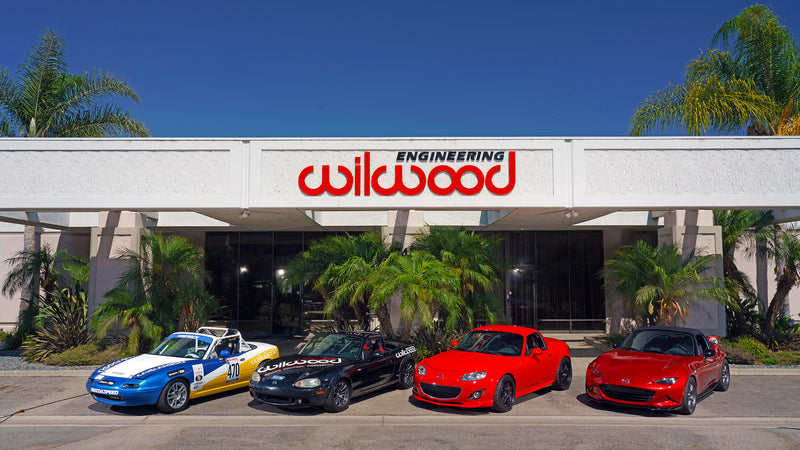
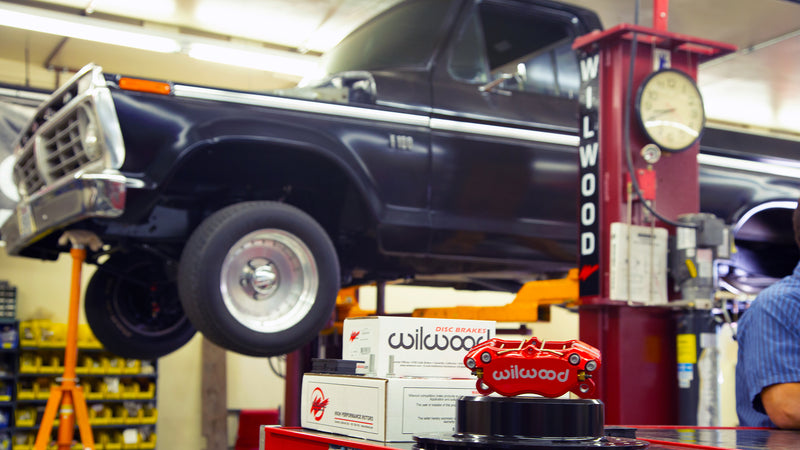
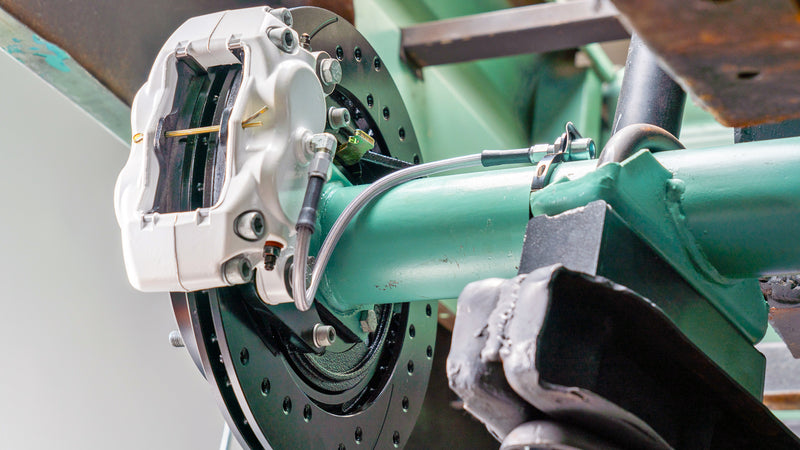
Does Wilwood make a replacement hydroboost for 87 Buick Regal T Type